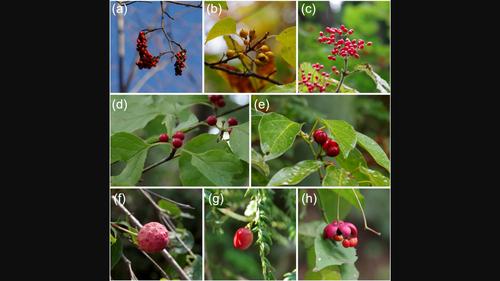当前位置:
X-MOL 学术
›
Ecol. Res.
›
论文详情
Our official English website, www.x-mol.net, welcomes your feedback! (Note: you will need to create a separate account there.)
Forest tree community ecology and plant–soil feedback: Theory and evidence
Ecological Research ( IF 2 ) Pub Date : 2024-01-30 , DOI: 10.1111/1440-1703.12445 Kohmei Kadowaki 1, 2
Ecological Research ( IF 2 ) Pub Date : 2024-01-30 , DOI: 10.1111/1440-1703.12445 Kohmei Kadowaki 1, 2
Affiliation

|
Mounting evidence suggests that reciprocal interactions between plants and the soil microbiota can be a primary force that generates key macroscopic patterns of plant communities (coexistence, dominance, and succession) in forest ecosystems. The aim of this article is to review empirical and theoretical perspectives of plant–soil feedback research in the context of forest community ecology. I first use a simple theoretical model to get insights into an array of the dynamics generated by plant–soil feedback: negative plant–soil feedback maintains plant species diversity and reduces plant growth, while positive plant–soil feedback drives plant growth of certain species and hence their dominance. I then describe how ecologists have unveiled the enormously complex plant-microbiota interaction (i.e., the soil conditioning experiment) and review the linkage of plant–soil feedback with three key plant community patterns: (i) dominance, (ii) spatial structure and (iii) succession. I highlight one belowground plant trait (mycorrhizal type) that can mediate these linkages: arbuscular mycorrhizal species tend to exhibit negative plant–soil feedback while ectomycorrhizal species tend to exhibit positive plant–soil feedback. Although mycorrhizal plant–soil feedback potentially explains the patterns of tree diversity from local to global scales, many questions remain. Future studies should expand plant–soil feedback theory to incorporate numerous other feedback mechanisms and test how mycorrhizal types mediate the net feedback effects that could propagate to shape large-scale forest structures and dynamics.
中文翻译:

林木群落生态学和植物-土壤反馈:理论与证据
越来越多的证据表明,植物和土壤微生物群之间的相互作用可能是产生森林生态系统中植物群落关键宏观模式(共存、优势和演替)的主要力量。本文的目的是回顾森林群落生态背景下植物-土壤反馈研究的实证和理论观点。我首先使用一个简单的理论模型来深入了解植物-土壤反馈产生的一系列动态:植物-土壤负反馈维持植物物种多样性并减少植物生长,而植物-土壤正反馈则驱动某些物种和植物的生长。因此他们的统治地位。然后,我描述生态学家如何揭示极其复杂的植物-微生物群相互作用(即土壤调节实验),并回顾植物-土壤反馈与三种关键植物群落模式的联系:(i)优势,(ii)空间结构和( iii) 继承。我强调了一种可以介导这些联系的地下植物性状(菌根类型):丛枝菌根物种往往表现出植物-土壤负反馈,而外生菌根物种往往表现出植物-土壤正反馈。尽管菌根植物-土壤反馈可能解释从局部到全球范围内的树木多样性模式,但仍然存在许多问题。未来的研究应该扩展植物-土壤反馈理论,纳入许多其他反馈机制,并测试菌根类型如何介导净反馈效应,从而传播形成大规模的森林结构和动态。
更新日期:2024-02-01
中文翻译:

林木群落生态学和植物-土壤反馈:理论与证据
越来越多的证据表明,植物和土壤微生物群之间的相互作用可能是产生森林生态系统中植物群落关键宏观模式(共存、优势和演替)的主要力量。本文的目的是回顾森林群落生态背景下植物-土壤反馈研究的实证和理论观点。我首先使用一个简单的理论模型来深入了解植物-土壤反馈产生的一系列动态:植物-土壤负反馈维持植物物种多样性并减少植物生长,而植物-土壤正反馈则驱动某些物种和植物的生长。因此他们的统治地位。然后,我描述生态学家如何揭示极其复杂的植物-微生物群相互作用(即土壤调节实验),并回顾植物-土壤反馈与三种关键植物群落模式的联系:(i)优势,(ii)空间结构和( iii) 继承。我强调了一种可以介导这些联系的地下植物性状(菌根类型):丛枝菌根物种往往表现出植物-土壤负反馈,而外生菌根物种往往表现出植物-土壤正反馈。尽管菌根植物-土壤反馈可能解释从局部到全球范围内的树木多样性模式,但仍然存在许多问题。未来的研究应该扩展植物-土壤反馈理论,纳入许多其他反馈机制,并测试菌根类型如何介导净反馈效应,从而传播形成大规模的森林结构和动态。



























 京公网安备 11010802027423号
京公网安备 11010802027423号